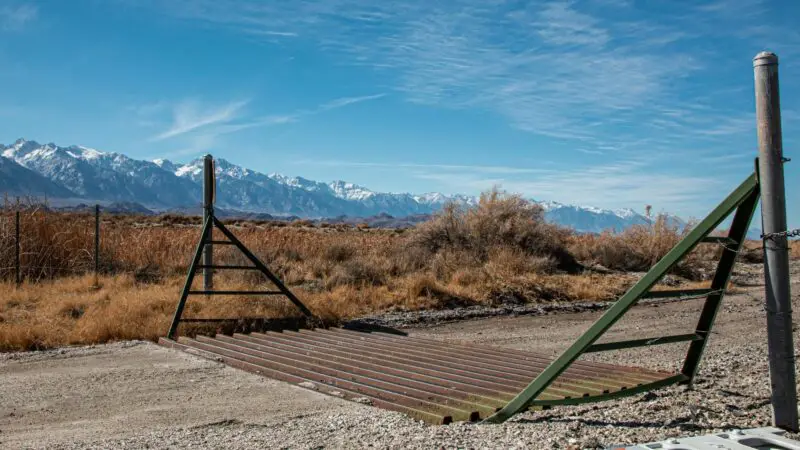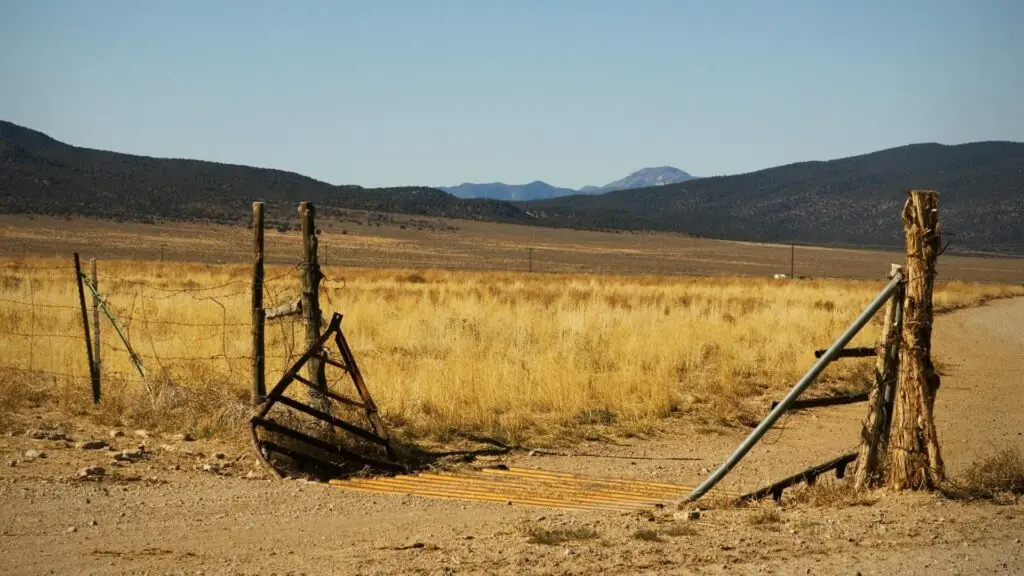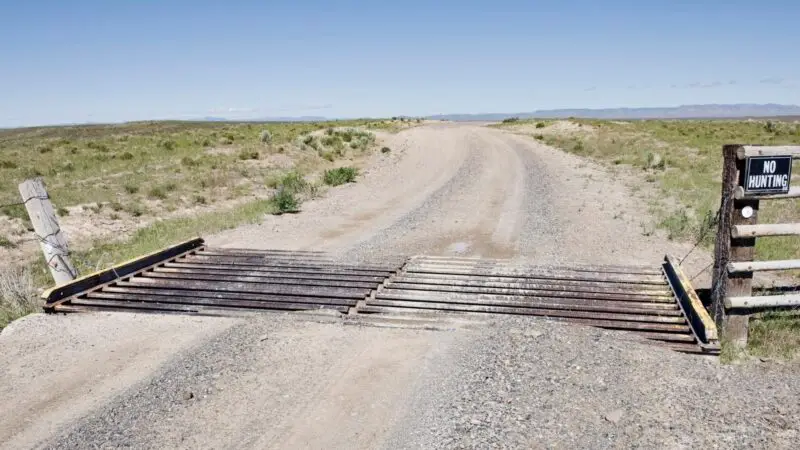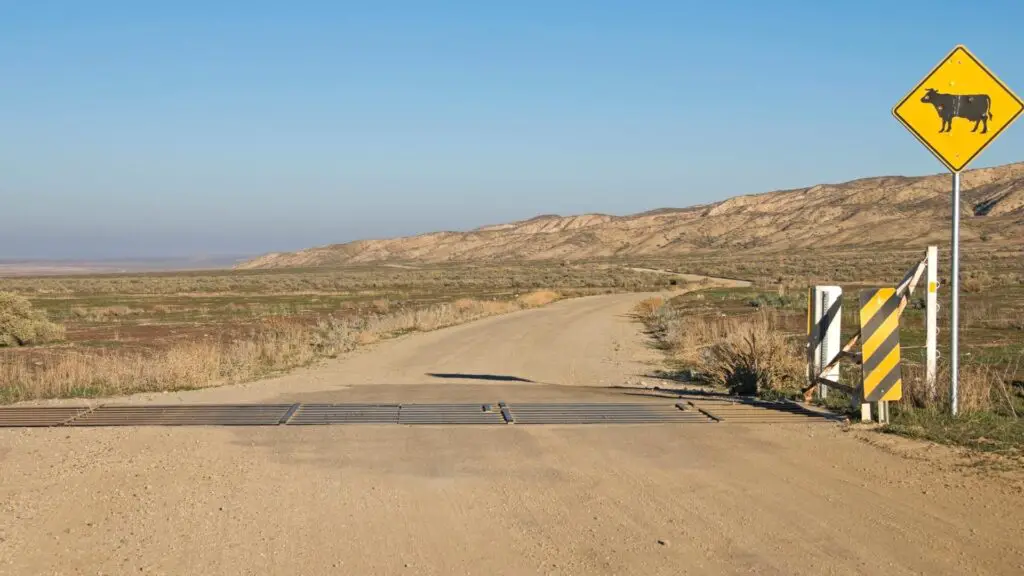Farmers build structures to keep not just cattle, but horses and other livestock within their properties. Cattle guards are one of these measures. They first appeared in the intersections of railways and fences in the railroad era of the 1830s. You’ll be about to find out that they’re still relevant up to these days.
What is a cattle guard? Cattle guards, cattle grids, and stock grids are drive-over getaways. They are usually composed of beams that are made of steel, concrete, or wood. A large livestock operation use them to stop cattle from running away, but vehicles are allowed to pass through. These cattle guards are considered visual barriers since animals like cattle and horses are threatened with depth perception.
Cattle guards are usually stationed in an area where there’s road intersection on the fence line, high-traffic corridors, and open range states with highways or roads. These settings are stated in administrative provisions for highways.
There’s a narrow hole or ditch crossing as well as painted lines on pavements. To understand cattle guards further, read on.
What Is the Purpose of a Cattle Guard?

A cattle guard is a structure that is placed on a ground’s depression to prevent cattle and other livestock from leaving an enclosed farm. You’ll usually find them between public and private property. Placing cattle guards is more appropriate than fences on some roadways.
How Do Cattle Guards Work?
The cattle guards work because of the depth perception of cattle or other livestock. The understanding of these animals is there’s a bottomless pit so they’re afraid of crossing the guards.
An uneven surface is another thing that threatens the animals. The spot that has been dug appears like an enormous pothole or wide trench.
Cattle can’t tell whether the cattle guards are just below the steel or concrete. These animals have great field vision, but they have shortcomings when it comes to short-range vision. They have this trait since they can detect predators from afar.
Moreover, they can’t comprehend the weird hole in the cattle guard. Cattle always ensure that they have secure footing. Unfortunately, the pipes on the cattle guards contradict this idea.
Are Cattle Guards Safe?

Cattle guards are safe for people to walk and vehicles to cross. On the contrary, they’re not for cattle since the legs of cattle and horses can slip through the pipes.
Then, they can get stuck and need help to be lifted for safety. When a mishap of getting stuck occurs, some animals may break a leg.
How Deep Should a Cattle Guard Be?
To scare off the animal from stepping on the cattle guard, the hole or ditch should be at least 8 feet deep.
What Are Cattle Guards Made Of?

Here are the components that are typically used for cattle guards.
Concrete
Concrete cattle guards are common, and they’re usually supported by steel rods. Most farmers choose this material as it gives assurance for the safe passage of vehicles. It can withstand outdoor elements, but you have to pay a higher cost for its shipment due to its massive weight.
Steel
This is an excellent material for cattle guards, but it can be costly though. It’s added to the concrete for the completion of a cattle guard. You can choose the galvanized steel, or else you have to paint it to survive weather changes.
Virtual
A virtual cattle guard is cost-efficient since you only need to initially spend for paint. However, repainting is necessary from time to time until you spend the amount of money that is sufficient for building a concrete cattle guard.
You have to know that there’s no guarantee that animals will be reluctant to cross on it. Once one of them does, the others or the whole flock will follow.
Electric
This one is cost-effective and hassle-free to install. It also fends off predators from entering your property. Electric guards are available in various designs. The one that is proven and tested that works are the high-tensile wire.
Should You Use a Cattle Guard?
You should use a cattle guard when you leave your animals in an open pasture or the middle of unlatched fence lines. If you build this structure, you won’t worry about putting your cattle and other livestock in danger of letting them go astray.
A cattle guard is much better than cattle gates. The latter requires maintenance and management, and when you open them, they need to be closed to keep the animals locked. But these procedures are not necessary when you have a cattle guard.
Can Goats Cross Cattle Guards?

It’s effortless for goats to cross the cattle guards because they’re agile. These animals can jump on the rocks, and there’s even an agility class on goat competitions. How much more than just crossing a cattle guard?
Can Dogs Cross Cattle Guards?
Since dogs are one of the animals that don’t have hooves, it’s not a problem for them to cross cattle guards.
Will a Horse Walk Over a Cattle Guard?

A horse will walk over a cattle guard, but it’s dangerous whether it’s saddled or loose. It may also attempt to jump over the guard. When it does these actions, it can get its leg or hoof trapped. A horse can be severely injured when it happens.
With these consequences, it’s advisable to erect a vehicle gate between where the horses are and the cattle guard. Another option to ensure safety is painting white, bold parallel lines in the same spot.
Do Cows Get Stuck in Cattle Guards?
Cows get stuck in cattle guards because of the pipes. The main purpose of building this structure is to keep the animals from leaving your property. But it can put animals with hooves like cows in danger.
How to Clean Out a Cattle Guard?
Pieces of wood can get stuck in between the pipes of the cattle guard. You’ll even be surprised that it’s covered by soil and dirt, and there are weeds growing on top of it.
Thus, it no longer serves its purpose. When it happens, you’re not allowed to place any object on the cattle guard to stop your animals from walking away.
To put the cattle guard in its normal state, you have to clean it. However, it’s not advisable to do it during winter because of snow build-up. Rainwater can help to sweep the debris below the cattle guard. The usual cleaning out of a cattle guard is completed through the following steps:
- Shovel and some tools will help you dig the soil accumulated in the middle of the pipes. It’s a must in some cases before you can remove the cattle guard.
- The ditch should be emptied, as well to give way to drainage and water flow.
- Mind about roadbed and surfacing materials when doing the cleaning process. You need to tamp the bordering road to give support and consistent texture to the surface.
- Once the cattle guard is removed, clean and free it from rust, grease, and oil. A wire brush can help you with the cleaning process. Sanding, sandblasting, and grinding may also be necessary. Repainting the guard is great before putting it back to its location.
How to Build a Cattle Guard?
Building a cattle guard is pretty straightforward. There are two main designs with different processes to complete each of them:
Flat Box Design
The pipes can either be flat or round, and they’re attached around the grid. Traditionally, they’re mounted on bridges or other concrete footings for an open vault below it. A removable box can be added to the open vault for easy disposal of debris.
Boxed Design
This design is flat and ideal for temporary use. To begin building this cattle guard, a dirt ramp should be placed on any of its sides. You have to weld a steel skirt around it to prevent clogging and dirt from entering. This design can be on the ground even without a vault or footing.
Since it’s not built on the ground, it can shift and move as time goes by. Despite this setup, it can bear the weight of a loaded tractor.
How Much Does a Cattle Guard Cost?
A cattle guard can cost from $2,500 to $3,000.
How Do You Keep Cows From Crossing a Cattle Guard?
Keep your cows from crossing a cattle guard by making sure that there’s a perception of depth. Once this picture is established, cows will likely retreat as they think that they’ll be in danger.
Summary
From the railway’s intersection, cattle guards became the partner of farmers in keeping cattle and other livestock within their properties. Though it can trick the animals into not stepping on it, some may ignore the threat and fail to retreat.
Some animals will end up getting hurt or injured. Therefore, you must build a cattle guard properly, so it poses a threat to the animal’s point of view.
List of Sources
Policy on the Installation and Maintenance of Cattle Guards Upon County Roads
